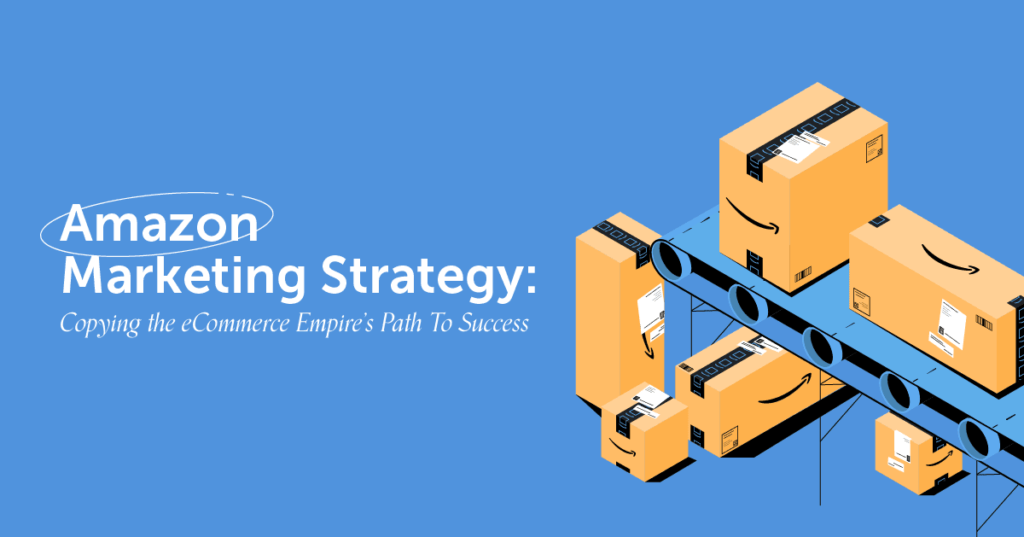Amazon marketing refers to the strategies and techniques used to promote products and services on the Amazon platform. Here are some key aspects of Amazon marketing:

Amazon SEO (Search Engine Optimization): Optimizing product listings with relevant keywords, high-quality images, detailed descriptions, and positive customer reviews to improve visibility in Amazon search results.
Amazon Advertising: Using Amazon’s advertising services like Sponsored Products, Sponsored Brands, and Sponsored Display to reach target audiences, increase product visibility, and drive sales.
Product Content Optimization: Ensuring product titles, bullet points, descriptions, and images are optimized for both Amazon’s search algorithm and customer engagement.
Amazon Reviews Management: Encouraging positive reviews from satisfied customers and addressing negative feedback promptly to maintain a positive reputation.
Amazon Prime: Leveraging Amazon Prime benefits such as fast shipping, Prime Day promotions, and Prime-exclusive deals to attract and retain customers.
Amazon A/B Testing: Conducting experiments with different product images, titles, pricing strategies, and ad placements to identify the most effective marketing approaches.
Amazon Influencer Marketing: Collaborating with influencers and bloggers who have a strong following on Amazon to promote products and increase brand awareness.
Amazon Storefront Optimization: Creating and optimizing Amazon storefronts with branded content, featured products, and a user-friendly layout to enhance the shopping experience for customers.
Introducing Digital Business E Profile

How to work Amazon marketing
Working with Amazon marketing involves several key steps to effectively promote products and services on the platform. Here’s a step-by-step guide:
Set Up an Amazon Seller Account: If you’re not already selling on Amazon, start by creating a seller account. Choose between an individual seller account (suitable for small-scale sellers) or a professional seller account (ideal for businesses with larger inventories).
Research and Identify Your Target Audience: Conduct market research to understand your target audience, including their demographics, preferences, and buying behavior. Use tools like Amazon’s own analytics and external market research tools to gather data.
Optimize Product Listings: Create compelling product listings that are optimized for Amazon’s search algorithm and user experience. This includes writing keyword-rich titles, detailed descriptions, informative bullet points, and high-quality images.
Building a Successful Online Presence: The Intersection of Website Design and Digital Marketing
Implement Amazon SEO: Use relevant keywords throughout your product listings to improve visibility in Amazon search results. Focus on long-tail keywords that are specific to your products and have a reasonable search volume.

Utilize Amazon Advertising: Leverage Amazon’s advertising platform, including Sponsored Products, Sponsored Brands, and Sponsored Display ads, to reach your target audience and drive traffic to your product listings.
Optimize Pricing and Promotions: Set competitive prices for your products and run promotions such as discounts, coupons, and lightning deals to attract customers and increase sales.
Manage Inventory and Fulfillment: Ensure you have sufficient inventory to meet demand and use Amazon’s fulfillment services (Fulfillment by Amazon or FBA) for efficient order processing, shipping, and customer service.
Introducing Dil Ka Rishta App- Your Pathway to Deeper Relationships!
Monitor Performance and Analytics: Regularly monitor your Amazon Seller Central dashboard and use analytics tools to track key performance metrics such as sales, traffic, conversion rates, and customer reviews. Use this data to make informed decisions and optimize your marketing strategies.
Optimize Customer Experience: Provide excellent customer service, respond promptly to customer inquiries and feedback, and continuously improve product quality and delivery processes to enhance the overall customer experience.
Iterate and Improve: Continuously test and iterate your marketing strategies, product listings, pricing strategies, and promotions to optimize performance and stay competitive on the Amazon marketplace.
By following these steps and staying informed about Amazon’s policies, algorithms, and best practices, you can effectively work with Amazon marketing to promote your products and grow your business on the platform.
Benefits OF Amazon Marketing
Amazon marketing offers several benefits for businesses looking to promote their products and reach a wider audience. Some of the key benefits include:
Vast Customer Reach: Amazon has a massive global customer base, providing businesses with access to millions of potential customers who visit the platform daily to shop for a wide range of products.
High Traffic and Visibility: Amazon is one of the most visited e-commerce platforms globally, offering businesses increased visibility and exposure for their products through search results, recommendations, and promotional opportunities.

Trust and Credibility: Amazon is a trusted and well-established online marketplace, known for its secure payment systems, reliable shipping, and customer-friendly policies. This trust factor can help businesses build credibility and attract more customers.
Amazon Prime Benefits: Businesses enrolled in Amazon Prime can benefit from fast and free shipping options for Prime-eligible products, attracting Prime members who tend to spend more and shop frequently.
Amazon Advertising Tools: Amazon provides a range of advertising tools such as Sponsored Products, Sponsored Brands, and Sponsored Display ads, allowing businesses to target specific audiences, increase product visibility, and drive sales.
Customer Reviews and Feedback: Amazon allows customers to leave reviews and feedback on products, which can help businesses gather valuable insights, improve product quality, and build trust with potential buyers.
Fulfillment Services: Businesses can opt for Fulfillment by Amazon (FBA), where Amazon handles storage, packaging, shipping, and customer service, streamlining the fulfillment process and enhancing the overall customer experience.
Data and Analytics: Amazon provides robust analytics and reporting tools, allowing businesses to track sales performance, monitor advertising campaigns, analyze customer behavior, and make data-driven decisions to optimize marketing strategies.

Global Expansion: Amazon enables businesses to expand their reach beyond local markets and sell to customers worldwide, leveraging Amazon’s international marketplaces and fulfillment services.
Continuous Innovation: Amazon continually introduces new features, programs, and tools to improve the selling experience for businesses, stay competitive in the e-commerce industry, and adapt to changing market trends.
Overall, Amazon marketing offers businesses numerous benefits, from increased visibility and customer reach to access to powerful advertising tools and fulfillment services, helping them drive sales, grow their customer base, and achieve success on the platform.










